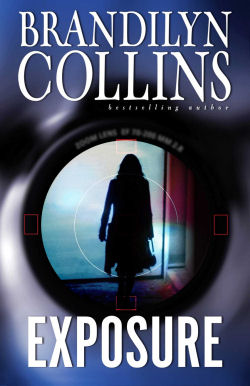|
A
few months ago on Twitter I posed the question “What annoys you most
when reading a novel?” In a few hours over eighty readers responded,
and I listed their answers in a blog post titled “Readers’
Rants.” This
answer caught my attention:
When you get to the
end, and the author has lied to the reader. It’s one thing to pull the
wool over my eyes (ala Murder of Roger Ackroyd),
it’s another thing to make me feel betrayed by the writer.
I agree. Surprising the reader
without lying to her is a fine line that writers should not cross. The
more twists you put into your stories, the more you need to toe that
line. Since my Seatbelt Suspense is all about twists, this is an issue
I’m very aware of when I’m writing. A good twist fools by causing
commotion elsewhere—sort of like one actor upstaging another. Once the
twist is revealed, the reader should be able to go back, see the
foreshadowing, and say, “Ah, yes. I should have known.”
When exactly does a writer lie
to/betray the reader?
When he tells the reader
something in an author narrative passage that later is revealed not to
be true.
Author narrative
are the key words. This is when the author is speaking directly to the
reader, as in describing a character:
He
stood six-four and
muscular, a solid wall of a man. Women loved his masculinity; men were
intimidated, many jealous. His face looked hard and worn, with lines
around his mouth, etching his forehead. But his eyes were gentle, true
windows to his soul. This was a man who would hurt no one, lie to no
one.
However, anything outside of
author narrative is fair game for misleading the reader because it’s in
the POV (point of view) of a character. And characters’ perceptions can
be inaccurate, no matter how right they think they are. This is a true
portrayal of life. We can believe something or someone very sincerely,
and turn out to be very wrong.
Let’s
say we’re in the POV of the protagonist, a woman who’s known the
described man for ten years. They’re having a conversation. She’s
thinking things as they talk. In the middle of their conversation runs
a similar passage.
He
stood six-four and
muscular, a solid wall of a man. Women loved his masculinity; men were
intimidated, many jealous. His face looked hard and worn, with lines
around his mouth, etching his forehead. But his eyes were gentle, true
windows to his soul. Stacy knew this was a man who would hurt no one,
lie to no one.
Stacy may “know”
it. And she may
be very wrong. Of course, the story would need to include foreshadowing
as to the truth about this man. And when the truth is revealed, the
protagonist should be reeling.
|
But
it gets a little trickier.
If an author writes in deep POV—that is, a point of view so deeply
inside the character’s head that everything is
described as that character would perceive the world—there obviously
will be no passages of description in which the author pulls back into
his own narrative voice. All description will be as the character sees,
feels, believes it. My books these days are always in deep POV. In the
deep POV of my protagonist, in the middle of the conversation between
these two characters, I could run the passage above just as it was
first written:
He
stood six-four and
muscular, a solid wall of a man. Women loved his masculinity; men were
intimidated, many jealous. His face looked hard and worn, lines around
his mouth, etching his forehead. But his eyes were gentle, true windows
to his soul. This was a man who would hurt no one, lie to no one.
If it turns out the man is
a liar, I wouldn’t be lying to my reader. I didn’t
tell the reader that. The character believed it. And characters can be
wrong.
Readers need to understand deep
POV—how to spot it, and how it works. It’s easy to spot. In deep POV,
when there are multiple points of view, each one will sound different,
according to how that character perceives the world. The same scene
would be described in very different ways, using different metaphors,
depending on whose POV you’re in.
Deep POV works well because it
helps characterize—you hear a different voice for each character. It
also gives the writer great latitude to present thoughts to the reader
that may or may not be true. This is the heart of the fun for suspense
readers—trying to figure out who’s right and who isn’t.

|